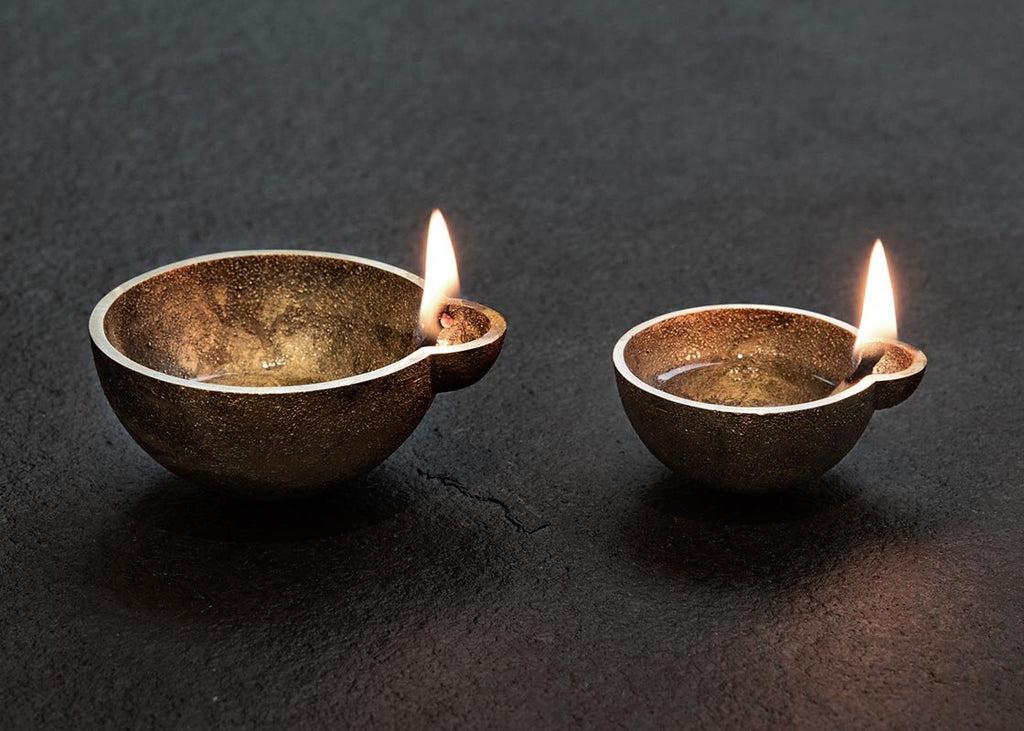The history of the Diya oil lamp goes back thousands of years. As far back as prehistoric times, people discovered that you can make a light with a wick of plant fibers, reed or moss in a hollow stone or shell filled with animal or vegetable fat. According to scientists, the oldest oil lamp found dates back to about 15,000 BC. Since then, oil lamps have been part of our household and many different types of oil lamps have been made over the centuries.
People started to make their own lights by hollowing out stones, later they made their own pots from clay. Some have a semicircular shape at the bottom to place the oil lamp in the sand. Later oil lamps with a standing base were made.  Sources of vegetable fuel for the Diya oil lamp are the oils of nuts and seeds such as walnuts, almond, sunflower and linseed from the flax plant. In ancient Greece and Rome, oil lamps were filled with olive oil, in ancient India with ghee, and in ancient Persia with petroleum. Later, in addition to simple lamps, more expensive oil lamps made of copper, tin, bronze, silver, glass and porcelain were introduced. Until about a hundred years ago, the oil lamp was the most popular form of lighting all over the world, next to the open fire and candlelight. The oil lamp is still important in many rituals and traditions.
Sources of vegetable fuel for the Diya oil lamp are the oils of nuts and seeds such as walnuts, almond, sunflower and linseed from the flax plant. In ancient Greece and Rome, oil lamps were filled with olive oil, in ancient India with ghee, and in ancient Persia with petroleum. Later, in addition to simple lamps, more expensive oil lamps made of copper, tin, bronze, silver, glass and porcelain were introduced. Until about a hundred years ago, the oil lamp was the most popular form of lighting all over the world, next to the open fire and candlelight. The oil lamp is still important in many rituals and traditions.
Shop the traditional Diya oil lamp here, handcrafted from solid brass and available in two sizes. You can use a pure vegetable oil such as organic sunflower oil.
